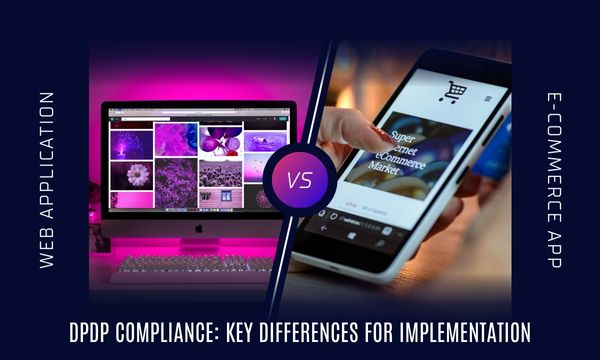
Consider a major automotive manufacturer coming to a grinding halt because cybercriminals have infiltrated its production systems. Millions of dollars in losses disrupted supply chains, and a tarnished reputation. Unfortunately, this is not a hypothetical situation. In 2023, ransomware impacted 66 per cent of organizations, and there was a staggering 400 per cent increase in IoT malware attacks, with the manufacturing sector being the most targeted globally (Deloitte United States). This alarming trend underscores the critical need for robust cybersecurity measures in the manufacturing sector.
The manufacturing sector faces unique challenges in cybersecurity, including protecting vast amounts of sensitive data, ensuring the integrity of production processes, and safeguarding interconnected industrial control systems. According to IBM’s X-Force Threat Intelligence Index 2024, there was a 71 per cent year-over-year increase in cyberattacks utilizing stolen or compromised credentials (IBM - United States). This highlights the urgent need for robust cybersecurity measures tailored to the specific needs of the manufacturing industry.
But why is manufacturing such an attractive target for cybercriminals? The answer lies in the industry's heavy reliance on interconnected systems, legacy infrastructure, and the high value of intellectual property. As the cyber threat landscape evolves, manufacturing organizations must adopt advanced technologies to safeguard their operations. This blog explores how manufacturing firms can leverage cutting-edge technologies to enhance their cybersecurity posture and ensure the security of their business.
1. Industrial Internet of Things (IIoT) Security Solutions
Network Segmentation and Microsegmentation: One of the primary challenges in manufacturing cybersecurity is the complexity of industrial networks. IIoT-specific security solutions enable organizations to create secure segments within their networks, reducing the risk of lateral movement by attackers. For example, a large electronics manufacturer implemented network segmentation to isolate its critical production systems from its corporate network, significantly reducing the attack surface.
Device Authentication and Access Control: Manufacturing environments are filled with a myriad of devices, from sensors to machinery. Ensuring that only authorized devices and users can access the network is crucial. Implementing robust device authentication and access control mechanisms can prevent unauthorized access and potential breaches. For instance, a chemical manufacturer adopted multi-factor authentication (MFA) for all its IIoT devices, enhancing security across its operations.
2. Artificial Intelligence (AI) and Machine Learning (ML)
Threat Detection and Response: AI and ML algorithms can analyze vast amounts of data in real time, identifying patterns indicative of potential threats much faster than traditional methods. By deploying AI-driven threat detection systems, manufacturers can proactively detect and mitigate cyber threats. A global aerospace company, for instance, used AI to detect anomalies in its network traffic, preventing a major cyberattack on its production facilities.
Predictive Maintenance: AI is not only useful for threat detection but also for maintaining the integrity of manufacturing systems. Predictive maintenance uses AI to predict and prevent equipment failures that could be exploited by cyber attackers. A major automotive manufacturer reduced unplanned downtime by 50 per cent and improved overall equipment effectiveness (OEE) through AI-driven predictive maintenance.
3. Blockchain Technology
Secure Data Transactions: Blockchain technology offers an immutable ledger that can ensure the integrity and security of data transactions across the supply chain. By utilizing blockchain, manufacturers can prevent data tampering and provide transparent audit trails. A pharmaceutical company leveraged blockchain to secure its supply chain data, ensuring the authenticity of its products from production to delivery.
Smart Contracts: Smart contracts are self-executing contracts with the terms directly written into code. They can automate and secure business processes, reducing the risk of human error and fraud. An electronics manufacturer implemented smart contracts to automate its procurement processes, enhancing security and efficiency.
4. Cloud Security Solutions
Advanced Encryption: Cloud-based services with advanced encryption techniques can protect data both at rest and in transit. Manufacturing organizations can use these services to ensure that sensitive data remains secure. A global machinery manufacturer adopted cloud security solutions with end-to-end encryption, safeguarding its intellectual property and customer data.
Security as a Service (SECaaS): Leveraging cloud-based security services for continuous monitoring, threat detection, and incident response can enhance a manufacturing organization's security posture. A textiles manufacturer utilized SECaaS to monitor its network 24x7, enabling rapid response to potential threats and minimizing downtime.
5. Advanced Endpoint Protection
Endpoint Detection and Response (EDR): EDR solutions monitor and protect endpoints, including industrial control systems (ICS) and other critical devices, from cyber threats. By deploying EDR, a food and beverage manufacturer was able to detect and contain a ransomware attack before it could disrupt production.
Zero Trust Security Model: Implementing a zero trust architecture ensures that every device, user, and network flow is authenticated and authorized. A steel manufacturer adopted a zero-trust model, significantly reducing the risk of unauthorized access to its critical systems.
6. Security Information and Event Management (SIEM)
Real-time Monitoring and Analysis: SIEM systems collect and analyze security-related data from various sources in real time, enabling faster detection and response to security incidents. A medical device manufacturer integrated SIEM into its cybersecurity strategy, enhancing its ability to detect and respond to threats promptly.
Integration with Threat Intelligence: Integrating SIEM with threat intelligence feeds keeps organizations updated on the latest threats and vulnerabilities. A semiconductor manufacturer used this approach to stay ahead of emerging threats, strengthening its overall security posture.
7. Identity and Access Management (IAM)
Multi-factor Authentication (MFA): Ensuring that all access to critical systems is protected by MFA reduces the risk of unauthorized access. A petrochemical company implemented MFA across its operations, enhancing security and compliance.
Role-Based Access Control (RBAC): Implementing RBAC limits access to sensitive information and systems based on users' roles and responsibilities. A consumer goods manufacturer adopted RBAC to protect its proprietary formulas and production data, ensuring that only authorized personnel had access.
8. Automated Patch Management
Vulnerability Management: Automated tools for scanning and patching vulnerabilities in systems and applications reduce the attack surface. A packaging company can utilize automated patch management to ensure its systems are up-to-date and secure.
Compliance Management: Automated compliance checks ensure that systems meet industry standards and regulations. A construction materials manufacturer can use automated tools to maintain compliance with cybersecurity regulations, avoiding costly penalties and breaches.
9. Advanced Encryption and Data Protection
Data Loss Prevention (DLP): Implementing DLP solutions to monitor and protect sensitive data from unauthorized access and leakage is crucial. An aerospace parts manufacturer adopted DLP to safeguard its designs and intellectual property.
Encryption Technologies: Using advanced encryption methods to protect data at rest, in transit, and during processing is essential. A pharmaceutical company employed end-to-end encryption to secure its clinical trial data, ensuring patient privacy and data integrity.
10. Cybersecurity Training and Awareness Programs
Regular Training Sessions: Conducting regular cybersecurity training sessions for employees keeps them informed about the latest threats and best practices. A food processing company held quarterly training sessions, significantly reducing the number of phishing incidents.
Simulated Phishing Attacks: Using simulated phishing attacks to educate employees on recognizing and responding to phishing attempts is effective. A consumer electronics manufacturer conducted regular phishing simulations, improving its employees' awareness and response to phishing attacks.
Conclusion
By leveraging advanced technologies, manufacturing organizations can significantly enhance their cybersecurity posture and protect their critical assets from ever-evolving cyber threats. From AI-driven threat detection to blockchain-secured supply chains, these technologies offer robust solutions to the unique challenges faced by the manufacturing sector. As cyber threats continue to grow in sophistication, adopting these advanced technologies is not just an option but a necessity for ensuring the security and resilience of manufacturing operations



